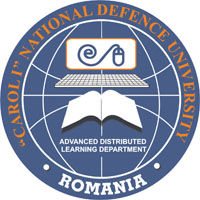GENERATIVE MODELS FOR COMPUTER PROGRAMMING DISCIPLINES
GENERATIVE MODELS FOR COMPUTER PROGRAMMING DISCIPLINES
Author(s): Ciprian-Bogdan ChirilăSubject(s): Education
Published by: Carol I National Defence University Publishing House
Keywords: generative learning objects; generative models; computer science disciplines
Summary/Abstract: Nowadays the IT industry is more and more present in several areas like: automotive, telecommunications, finance, medicine, pharmaceutics etc. One of the main problems in the development of these domains is the lack of highly qualified IT specialists, thus loosing million euros projects and afferent taxes. Among the IT specialists there is a significant segment allocated to programmers and testers. In order to train more IT specialists universities introduced several programs including distance learning and evening courses. The problem with these students is that they get weak results because of the limited in class face-to-face learning amount of time. The use learning management systems based on learning objects (LO) can ameliorate this problem. Generative learning objects (GLO) are instantiable generic templates that generate concrete learning objects. They are considered to be the second generation of learning objects (LO). They can be used in several learning areas like: economy - accounting, medical science - nursing, computer science - understanding programming with the help of robots. In this paper we will present a set of generative models designed for the e-learning of computer programming disciplines. In order to enable accessibility, enhanced understanding, creativity stimulation of computer programming we designed a set of generative models which are based on the GLO paradigm obtaining automatically concrete LOs. Our focus is set on providing these models to GLO authors with less programming skills together with the feature of automatic instantiation based on random number generators. Our models were designed for data structure disciplines in the context of developing programming competences, namely how to program using data structures like: arrays, lists, trees and graphs.
Journal: Conference proceedings of »eLearning and Software for Education« (eLSE)
- Issue Year: 11/2015
- Issue No: 02
- Page Range: 556-562
- Page Count: 7

